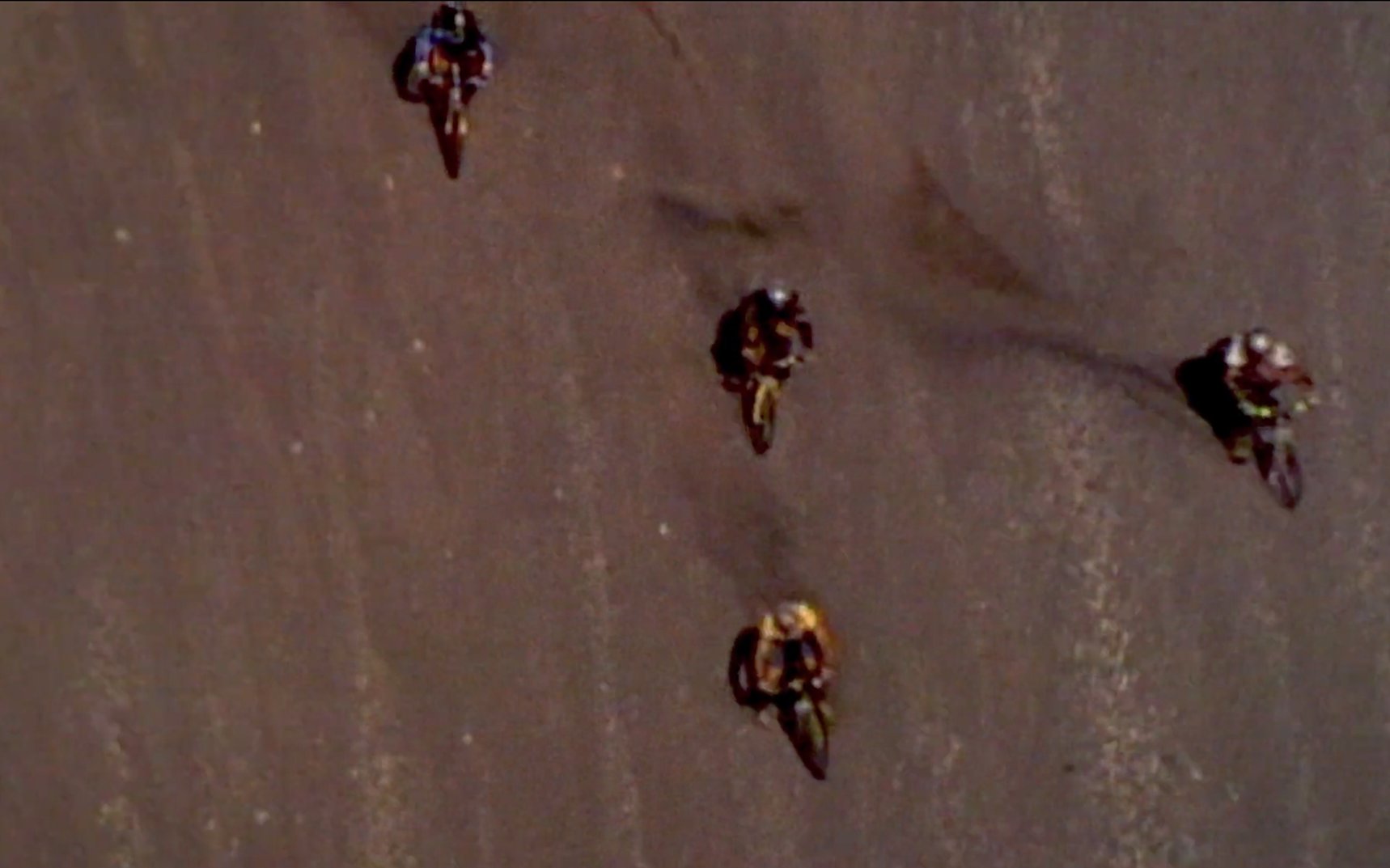
Darcy Turenne Interview
The Moment - The Birth of Freeride
Darcy Turenne spent 15 years pursuing the freeride life. Sponsors like Dakine and Norco supported her career and she was living the dream. I would bump into Darcy at events like Sea Otter and Crankworx regularly, and Darcy is the sort of person you want to bump into. She's positive and full of life and keen to converse beyond the world of mountain bikes; always a breath of fresh air at an event. Bumping into Darcy stopped abruptly but social media kept me up to date; she went back to school and started making films. Soon she was producing creative shorts and documentaries. And then she was walking the red carpet at Cannes...
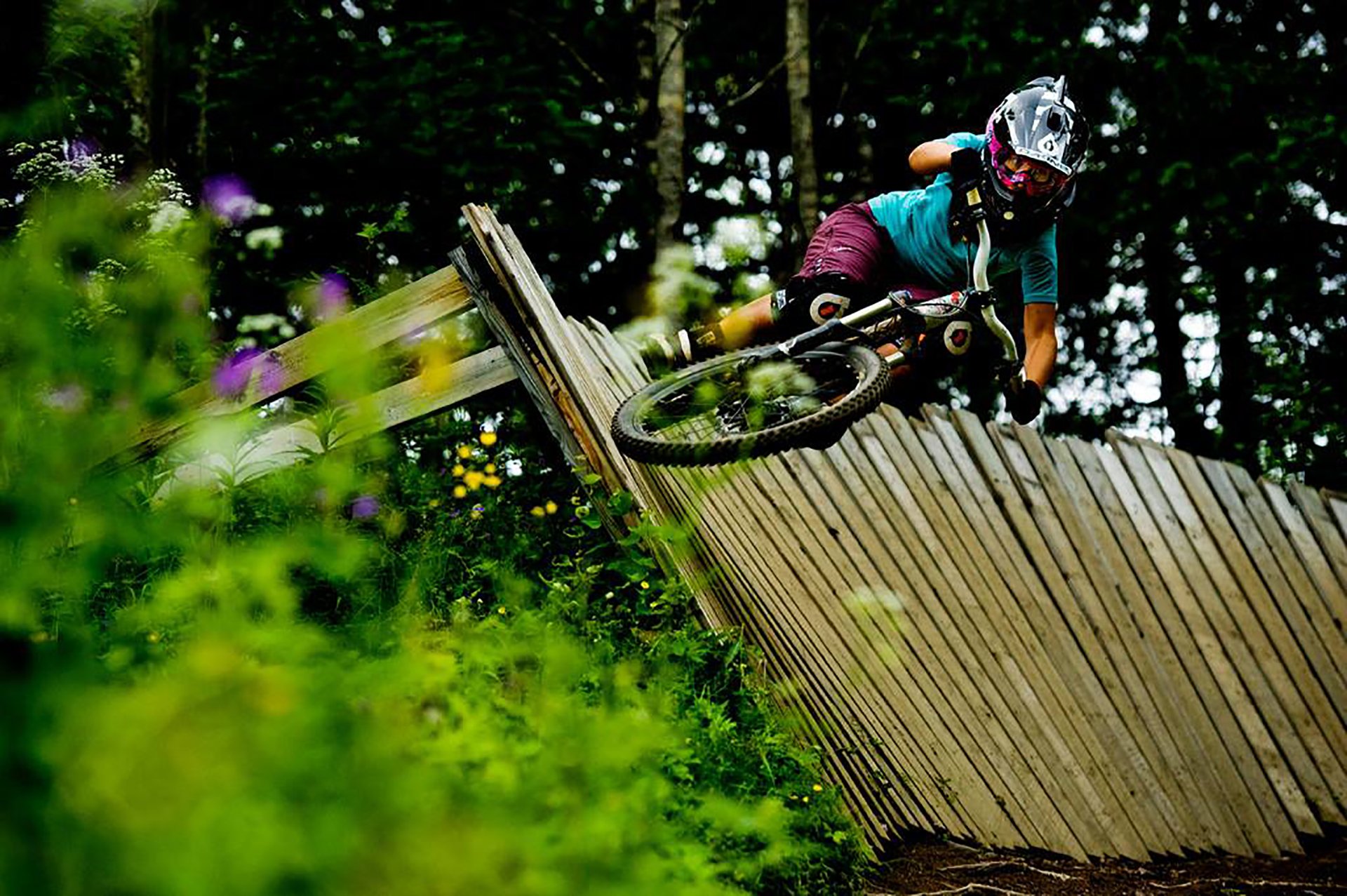
What could be better than life as a sponsored freerider?
An ankle injury gave Darcy a chance to consider her next steps, leading her back to university to pursue a Masters in International Communications. The broad strokes of the program allowed her the latitude to use video for the final thesis and this changed her life; "that’s when I knew filmmaking was the next career path I wanted to follow. I sold one of my bikes, bought a decent camera, and haven’t stopped making films since!"
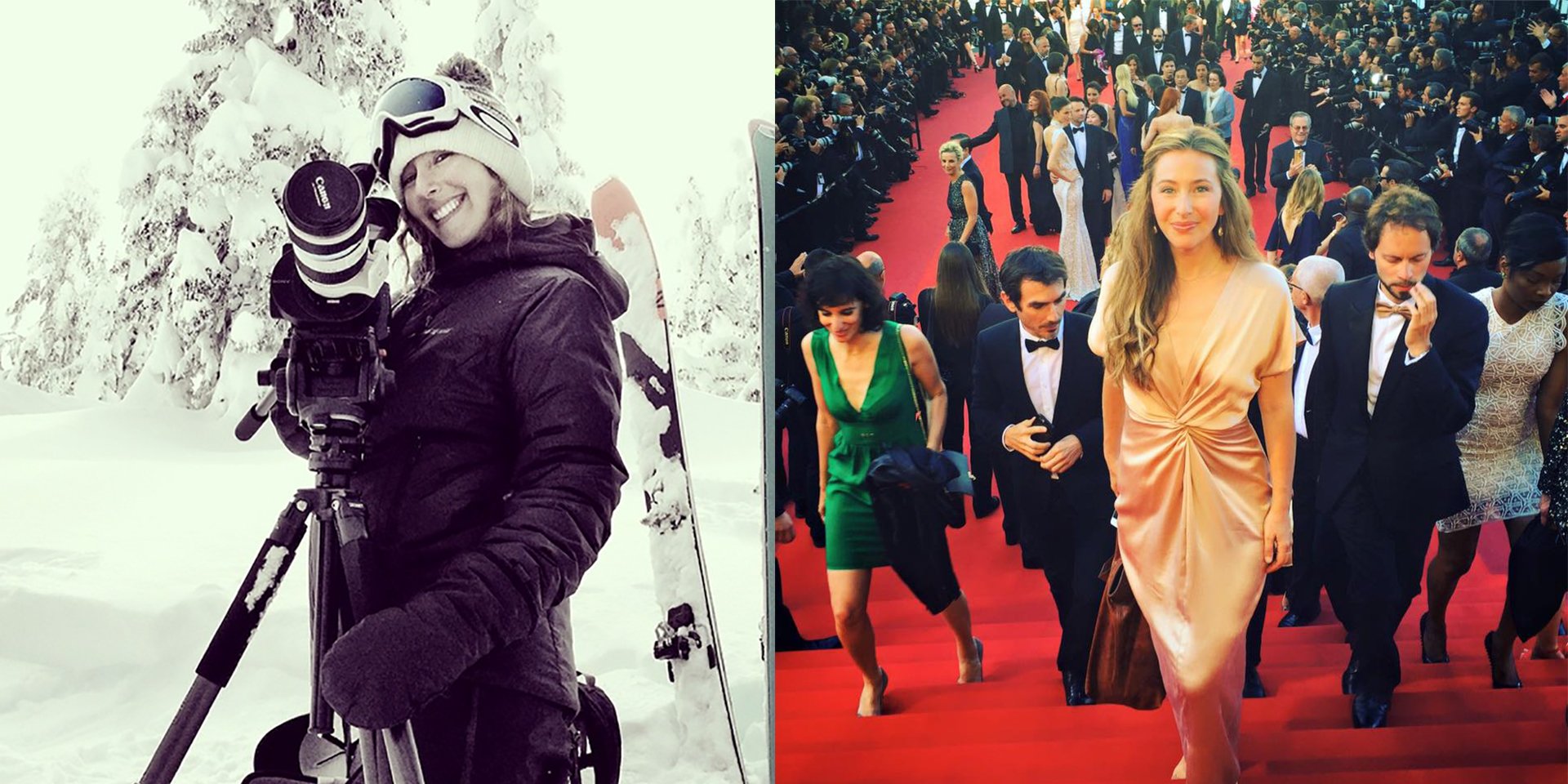
Darcy's filmmaking has taken her all over the world, and ultimately to the Cannes Film Festival.
As you'll learn below, one of Darcy's films caught the eye of Christian Bégin, co-producer of the Kranked series with Bjørn Enga. Christian had been organizing the archive of the early films, knowing behind the scenes there was a story that had to be told. After seeing just one of her films, he deposited much of his life's work in Darcy's lap. The story of three groups of riders, from Kamloops, the North Shore and the Kootenays, had found someone to tell it, and The Moment began to take shape.
Cam McRae - Having not crossed paths for years my only contact with you has been seeing what you are up to on social media. How did you go from one side of the camera to the other?
Darcy Turenne - It all happened quite unexpectedly, like most good things! I injured my ankle pretty badly dirt jumping so during my recovery I decided to enrol for my master’s degree in International Communications. It was a pretty vague program description so I thought it would be a good way to figure out what I wanted to do post-biking career. It totally worked out too because I made a documentary in Indonesia for my thesis and that’s when I knew filmmaking was the next career path I wanted to follow. I sold one of my bikes, bought a decent camera, and haven’t stopped making films since!

The exuberant and infectious Brett Tippie is of course a prominent character in the film. While The Moment does not deal with Tippie's hiatus from the sport, it does delve into other challenging territory.
What sort of projects have you worked on?
My portfolio is pretty varied because at first I refused to say “no" to anything because I thought the weird jobs would be the best learning experiences. Some of the films include:
- music videos for the Prime Minister of The Republic of Georgia’s son during the midst of a corrupt election
- mini documentary for Coca-Cola in Rwanda (that was my first commercial gig where I made $300 for 3 weeks of work and I was STOKED!)
- tons of videos for NGOs all over the world
- low budget music videos
- a 45 minute environmental snowboard film called “The Little Things”
- lots of ski shooting with Sweetgrass Productions
- a 5 minute 1-take film about a girl who finds a bag of magic mushrooms called “The Trip”
- lots of weird art videos with bubbles and paint that nobody will ever watch
- lots of boring commercials that I won’t show anyone
- all the video content for Patagonia’s food line called “Patagonia Provisions”
- a short cinema verité called “Jackieland” that got into the 2016 Cannes Film Festival
What are you most proud of?
I’m most proud of “Jackieland” because I followed my heart and was pretty uncompromising in my creative decisions. Some people love it, others hate it. So that makes me proud. I’d rather have polarized opinions of my work than make mediocre films that nobody feels anything for.
Which part of your work fires you up the most?
I really love writing and the early creative process. But I also love the process of capturing the magic. But then the fun creative decisions really happen during editing — I guess I love it all!
How did you get mixed up with Christian Bégin?
I’ve known Christian and his wife for a while from living in Squamish, but more on a social level. Then he came to the premier of my snowboard film “The Little Things” and I guess he really liked it because he called me to ask if I’d direct a film he was trying to get off the ground about the history of freeride.
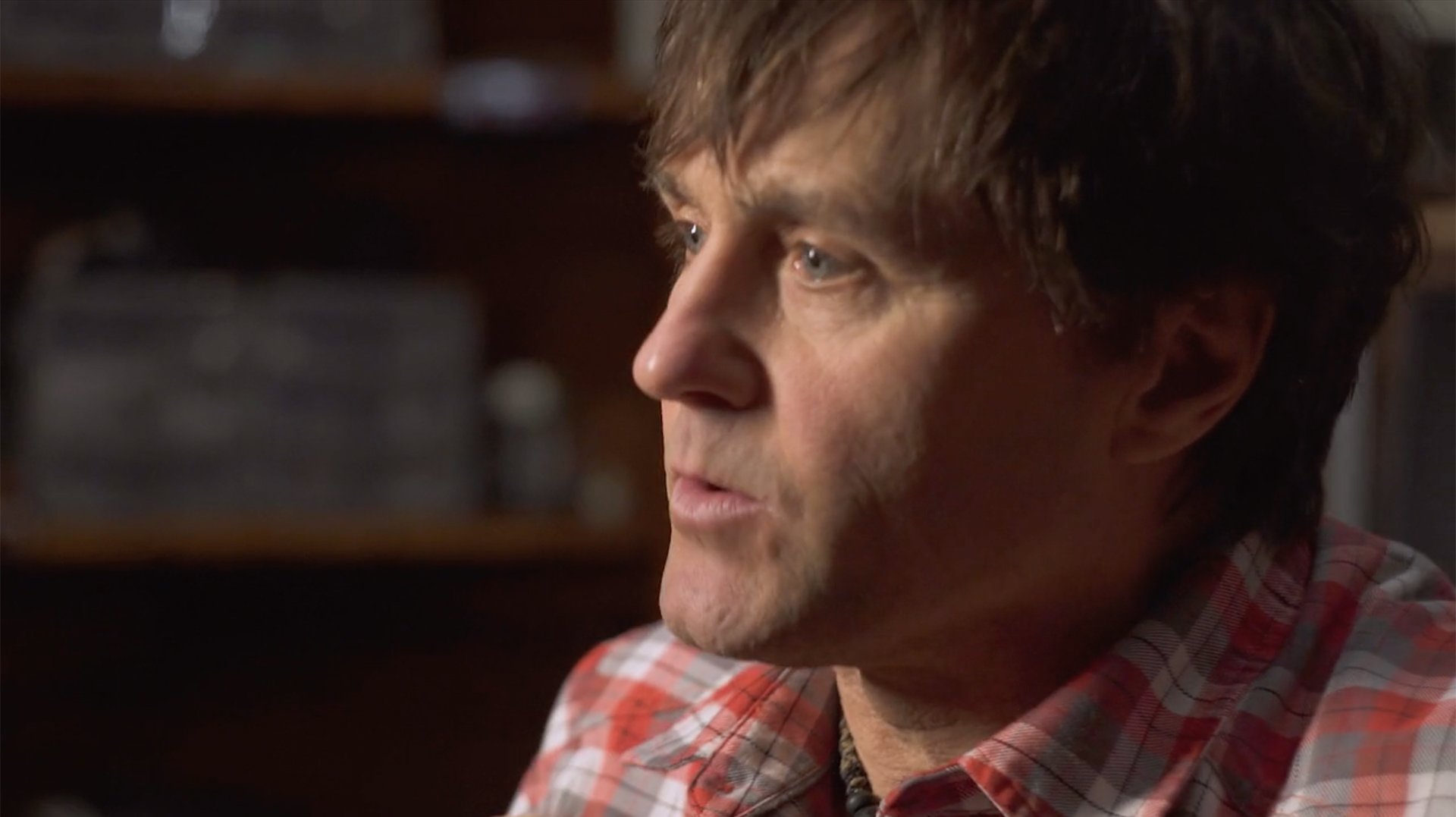
Christian Bégin being interviewed for the film.
What was his pitch to you?
I had just finished “The Little Things” which was a really intense 2-year project when Christian asked me to make “The Moment”. I was feeling quite burnt out and not ready to take on another massive project (which I knew this would be), but he was persistent! He told me that he was too close to the material to make the film himself, which I completely understood, and that he wanted me to make it because of my storytelling focus — it wasn’t just another sports film, it was a full-blown documentary and my vision for it was the same.
I couldn’t stop thinking about how much mountain biking gave me and how this would be the perfect opportunity to go back to the sport that I loved so much, but in a different way. I have mountain biking to thank for a lot in my life, and ultimately, it was those early freeriders that carved a niche for me to be able to do the same thing 15 years later.
So ya, despite my not wanting to take on a huge multi-year project at the time, I said yes. And I’m really happy I did.
How much footage did he have? Was it catalogued or organized in some way?
SO MUCH FOOTAGE!!!! Haha. Hundreds of hours. It was mildly categorized, but I still needed to watch all of it and organize it further so I knew where to go back to. Christian put in an unfathomable amount of time digitizing all his old tapes. It was a real gift to get that hard drive full of gold!
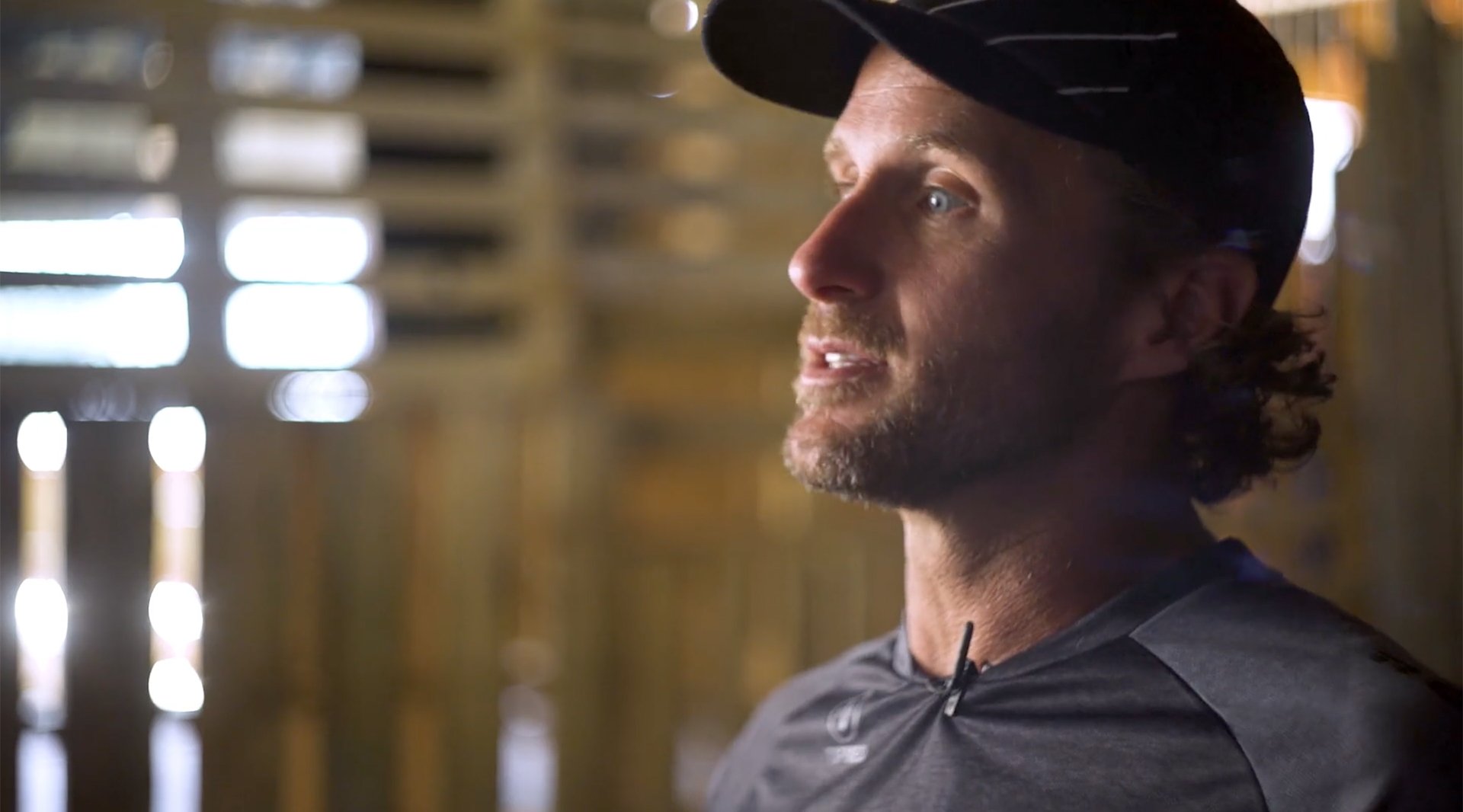
Richie Schley emerges as a humble and forthcoming interview subject.
Once you started going through the footage did the story begin to reveal itself right away?
I’m telling an accurate history of how the sport of freeride came to be, so the base story was always there intrinsically. However, once I started doing the interviews (all 28 of them), I knew where I needed to focus and what diversions off the main storyline I could make to keep the film entertaining, without getting too off-track.
I wrote a script after getting all the interviews transcribed and I’ve followed it pretty closely.
My rough cut was over 3 hours long. I had to cut out so many amazing stories and characters! I’m hoping that we can raise enough capital on Kickstarter so I can afford to release some of the cut scenes after the movie comes out. There are some gems that are scattered all over the edit room floor right now ;)
"(Christian) told me that he was too close to the material to make the film himself, which I completely understood, and that he wanted me to make it because of my storytelling focus — it wasn’t just another sports film, it was a full-blown documentary and my vision for it was the same."
How much of this story were you aware of? Had you watched all the films from the period covered by your film before this?
I had seen all the Kranked films, but I actually didn’t know Christian made them! Haha. I only knew about Bjørn. I had also seen the North Shore Extreme films and was well aware of Digger. But really, I knew very little about how freeride and freeride films became a thing. I knew nothing of Greg Stump’s film “Pulp Traction” (which was never publicly released) that preceded Kranked and ultimately made Christian run with the idea of filming extreme mountain biking.
I guess I had always taken the sport of freeride for granted. It was always just there. It was my whole life, and I really didn’t know about its humble beginnings. It’s been such a fun story to dive into!
What surprised you most once you started to learn about those early days?
I was most surprised by how much resistance it got from every corner of the industry. Nobody wanted anything to do with the sport, the athletes, and the filming. There were only a few early adopters, but, according to my interviews, the racers thought freeriders were a joke, the bike companies wanted nothing to do with them because they kept breaking their bikes, and the environmental groups deemed freeriders as public enemy #1.
That surprised me a lot…but now that I know the story, it kind of makes sense. Haha.
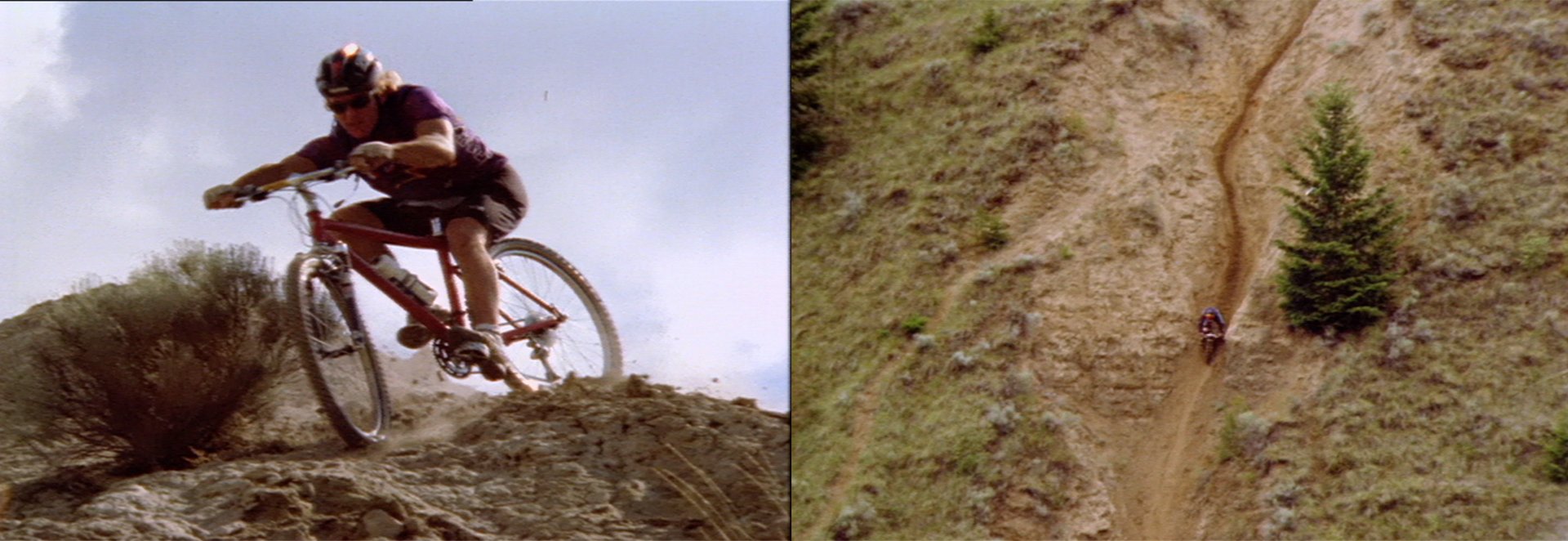
Big mountain lines before they were a thing. No matter how these lines look to you now, when viewed through the filter of vee-brakes, narrow bars, fragile rims and 75mm of travel they are revealed as truly heroic.
How many people did you interview for the film?
28 interviews. There could have been more too, but the movie would have been 8 hours long! I had to cut some characters out because the rough cut was way too long, and that always makes me quite sad.
What was the most memorable conversation you had?
Greg Stump! What a legend. His stories and the way he tells them are so funny that I kept imploding with laughter behind the camera. He is amazing on camera and I’m so grateful that he gave us the time.
Did the public image these riders have match what you learned from them?
Hmmm, hard to say because I’ve personally known almost all the characters in the film for years so I have never really paid much attention to their public personas — they are all quite true to themselves all the time, even on camera.
Did you get the sense that they knew they were creating something and breaking ground?
Most of the riders say that they knew they were breaking ground and doing something different, but they all say that they had no idea that the sport would explode and snowball like it did. That surprised everyone.

Before he was the Godfather; Wade Simmons took more than one nasty digger on this shoot twenty years ago, but he also nailed some stylish lines as you would expect. To see the footage click here. (*note - the first two shots in this trio are actually Aaron Knowles biting hard not Wade as previously indicated.. Wade took a bail in the video linked above that was every bit as nasty as this and he earned the raccoon eyes and bloody mouth seen in the photo.)
You present three areas that were hotbeds of trailbuilding and talent; the Kootenays, Kamloops and the North Shore. Did you have a sense that these riders were competing with each other in those early days?
I wouldn’t say they were competing in a negative way, rather, I get the sense that each scene was doing what they were doing independently until Kranked blew the lid open on all the scenes. Also, the article in BIKE mag that Leslie Anthony wrote and Eric Berger photographed was the first time that the light was shone on freeride in print, and that started the ball rolling for magazine coverage across all the scenes. There is a good story around that told by Dangerous Dan and Mitch Scott in the film. I won’t spoil it here :)
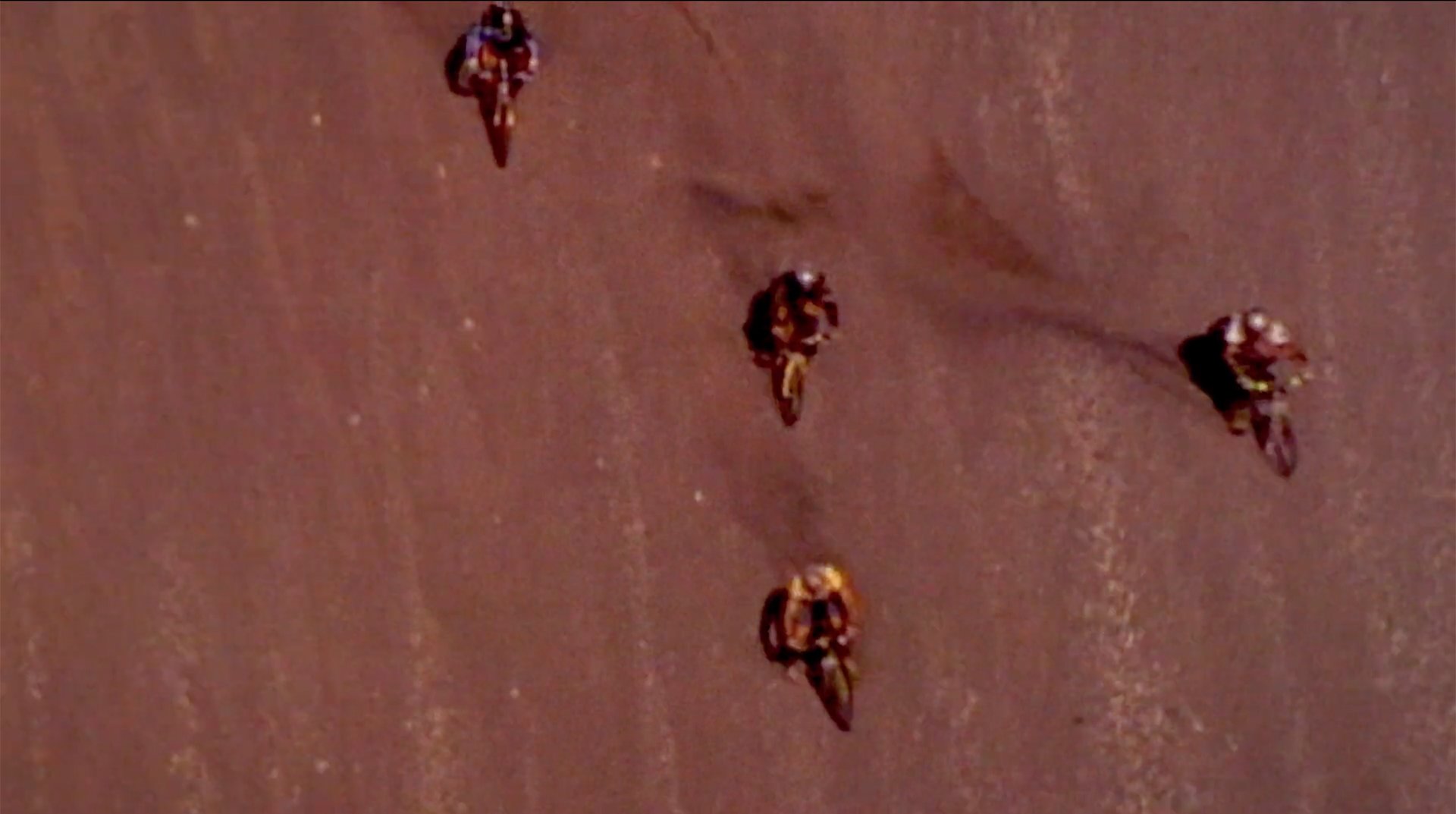
Many of the subjects of The Moment re-enacted this scene yesterday (Aug. 22nd) at Todd Pit in Barnhartville, a suburb of Kamloops while Darcy filmed the spectacle.
Were there riders with all the talent and skill needed to make it big who never broke through?
Yes! Plenty, and I wish that I had the time to feature all of them. But the rider that most people recognize as being one of the most talented riders that never chose to make it a career was Craig Olsson. You can tell by watching the Pulp Traction footage that he was extremely gifted on a bike.
People have been talking about making a film like this for years. What is it like to have much of the responsibility for accurately portraying such a pivotal moment in the history of mountain biking?
It’s scary! I feel so much responsibility and a lot of pressure to get this right and give everyone credit where credit is due. I know it’s almost impossible to make everyone happy with any movie, but I try not to think about it too much though or else I’d never get anywhere on the edit. Haha.
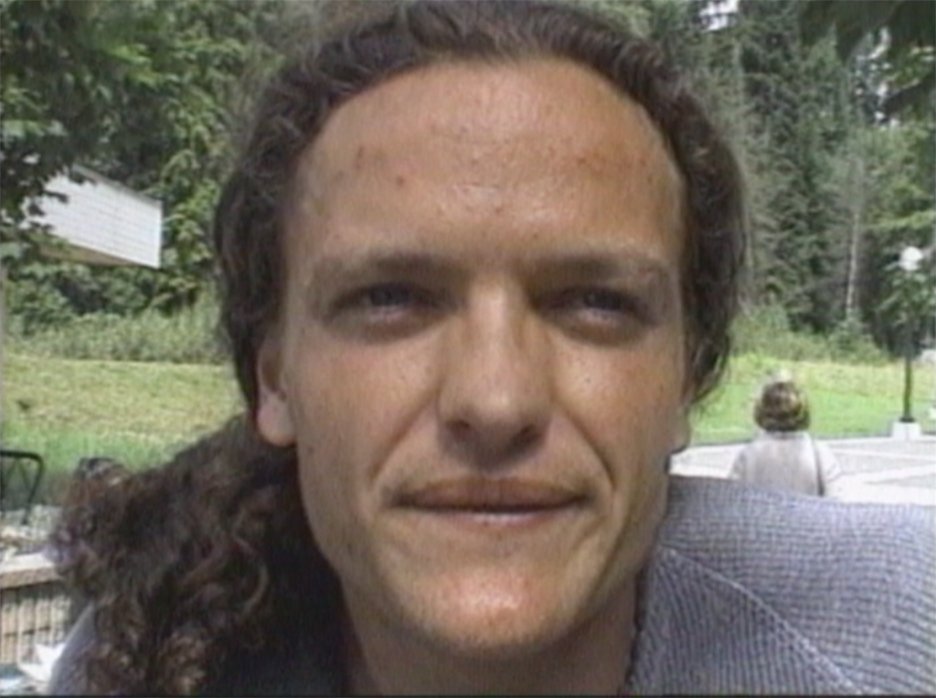
Danger Dan, along with Todd "Digger" Fiander, was a builder and rider who made the world take notice of what was happening on the North Shore. The last time I spoke to Dan he had taken a break from riding.
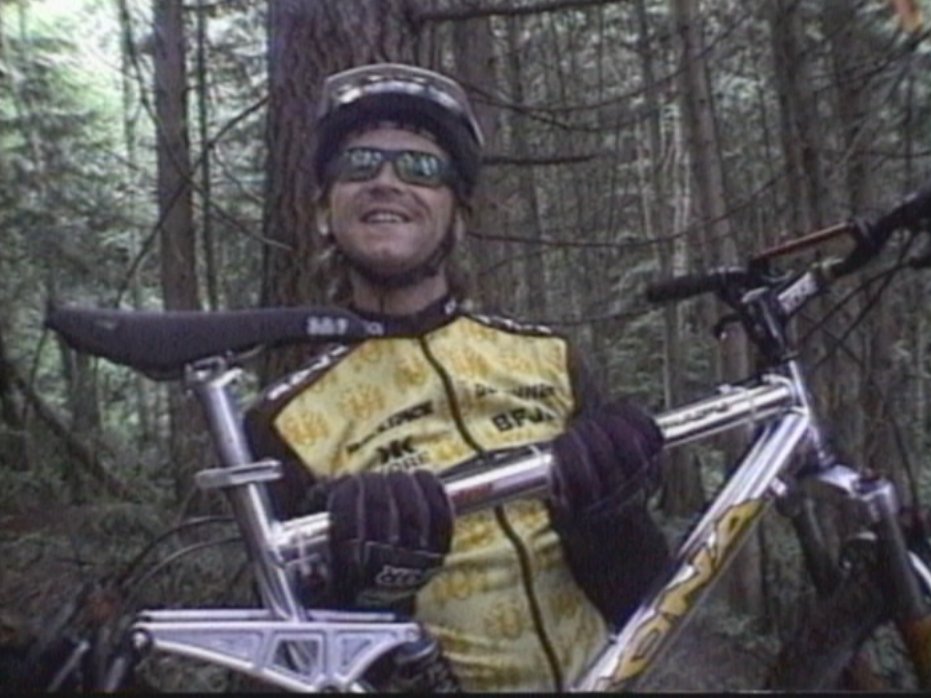
Johnny Smoke fits well into this colourful cast of characters. These days Smoke tours riders at Retallack Lodge and all over B.C.
Some of the riders in the film continue to have careers in mountain biking while the vast majority have gone on to do other things. Is there something you can see in the early footage of these riders that makes it clear why they have endured?
Well, I think it was mostly just a matter of choice. The riders that have endured are of course very talented or they wouldn’t have stood the test of time, but mostly they have chosen to make it a career path and they’ve worked extremely hard to make it happen. It’s all about what you choose to put your energy into, and these guys are great examples of it. None of them just sat idly waiting for things to be thrown at them. They all worked super hard to make it a career and to keep their skills up in order to keep it a career. Other riders chose to pursue other careers…which is also very hard to do and I have a lot of respect for them as well.
What can up and coming riders learn from the men and women who paved the way for them?
I think the most valuable lesson is that success isn’t given, its earned. The early riders set an example of how to be a pro athlete and it not only involves riding skills but also being business savvy, having interpersonal skills, and having an awareness of details. Richie Schley is a master at the details…there’s a great section in the film about it!

Chris "Lunchbox Larry" Lawrence was one of the unsung heroes of the early freeride movies, often wearing this incredibly heavy and uncomfortable helmet camera while shredding gnarly lines. The opposite side of the helmet was weighted for balance.
What were some of the more difficult stories to tell?
Because I know most of the characters personally I am always thinking about how they are going to perceive the film, but at the same time, story and accuracy is the most important thing to me and this film so I’ve had to stay true to that knowing that maybe not everyone will be really happy with the result. Telling Dave Swetland’s story was a challenge because it’s very emotional, but I don’t want it to come across like it’s just in there for emotionality’s sake. Dave was such a talent and true pioneer during the early days of Kranked and it touches on a very important issue (traumatic brain injury) — but with any story where you are representing someone that can’t represent themselves, I felt a strong responsibility to do it as respectfully as possible.
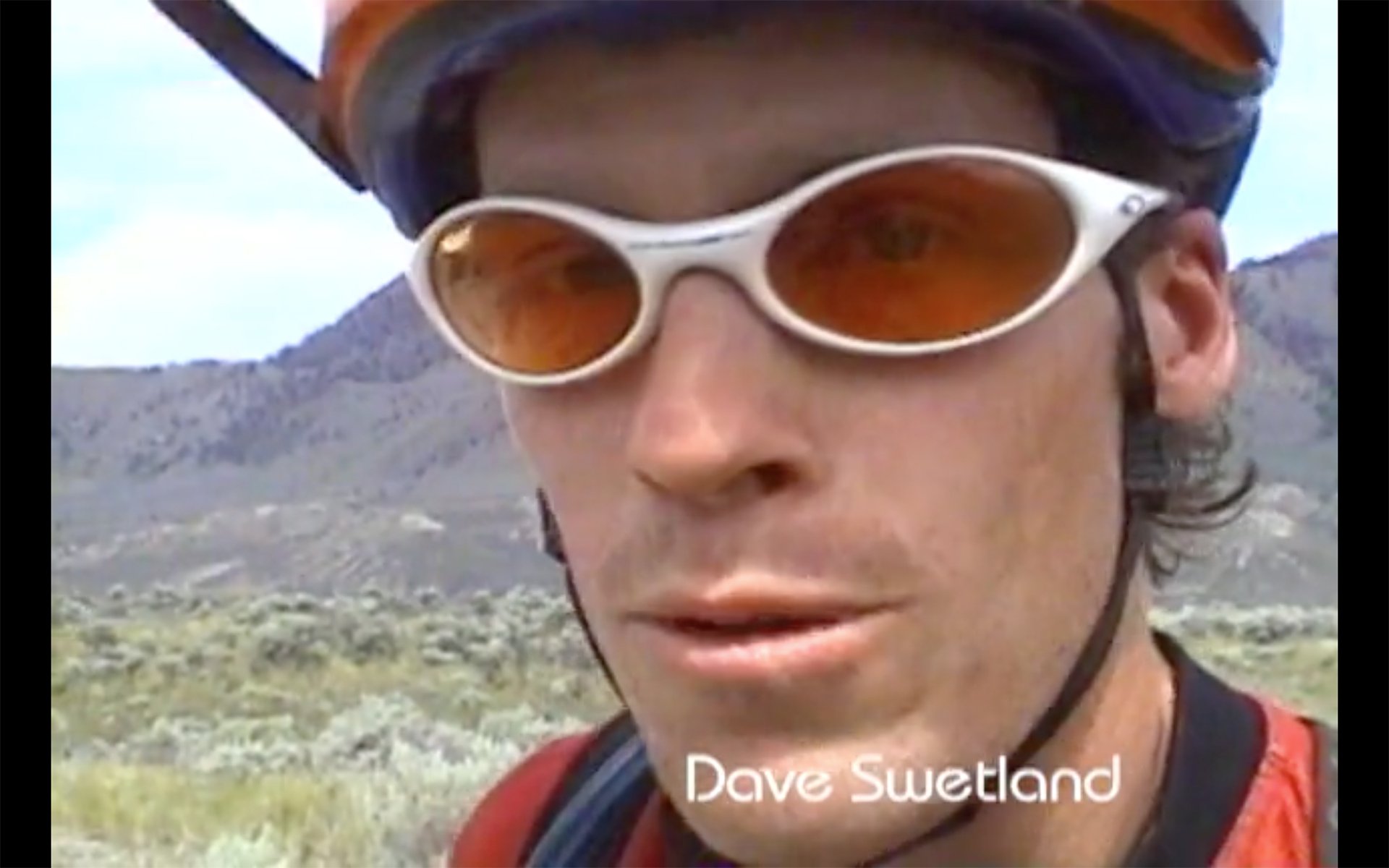
It's not all roses. Dave Swetland was killed in a single vehicle accident on October 4th, 2008. Swetty was one of the early stars of the scene, featuring in the first 3 Kranked movies. Swetland's challenges with both brain trauma and substance abuse are dealt with in the film.
Did any of the key figures in the film give you any advice about how to document their era?
I listened to everybody’s story and took note of what themes were recurring over and over and focused on those. By listening to everyone and giving them a platform to speak their opinions you can quickly separate what is personal agenda and what is history. As a documentarian you have to ignore personal agenda as much as possible in order to stay true to your story.
How involved in the process has Christian Bégin been?
Christian lived this story, so he was really involved in telling me the history and then leaving me with the creative freedom to tell the story as I saw fit in whatever visual direction I wanted to take it. We conducted the interviews together, and he was instrumental in lining up a lot of key interviews. He also spent hundreds of hours digitizing old footage! That’s dedication.
My conversations with Darcy made it clear that Christian made the right choice. These were the riders who made me a true fan of mountain biking, and inspired me to dream up this web site and I'm confident this film will do their story justice.
The teaser for the The Moment will be released in the coming weeks. Watch for a kickstarter campaign as well as premieres. After seeing a selection of scenes, each one more golden than the last, the wait to see the finished product is decidedly uncomfortable. We'll let you know as soon as we get more info on release dates etc.







Comments
daniele
6 years, 8 months ago
this is going to be awesome, congratulations Darcy!!!
Reply
tashi
6 years, 8 months ago
I'll be that guy: I'm pretty sure those crash stills are Knowles, not Wade.
Looking forward to the flick!
Reply
Cam McRae
6 years, 8 months ago
I think you are right Tashi. I mixed my crashes!
Reply
earle.b
6 years, 8 months ago
Really looking forward to seeing this.
Reply
DangerousDave
6 years, 8 months ago
Can't wait for this!! The original Kranked movie was a big piece of my childhood.
Reply
Mic
6 years, 7 months ago
Wow. I am really looking forward to this. And thank you Darcy that you are doing this, and Cam for bringing it on everbody's radar. Sweet. The Kranked movies were a huge part of
Reply
rithisha juiq
1 year, 9 months ago
I am amazed by this woman and how strong she is, especially glad she went back to school. I think Darcy Turenne should like Jackie Robinson to become a historical figure because, as a college student, I learned about him from the essay taken from here https://gradesfixer.com/free-essay-examples/jackie-robinson/. I am glad that he became such a hero by his deeds which became an example for many people and even generations. I hope Darcy will be like him and become a very popular example.
Reply
Please log in to leave a comment.